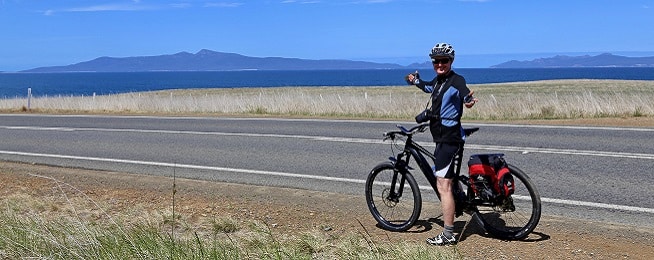The Tasmanian Government is continuing its road corridor studies around the state, with the 390km Tasman Highway between Sorell and Launceston the latest out for public comment.
The corridor studies try to identify major issues along a corridor and responses that are prioritised in terms of community need, active and public transport and road safety.
You can ask questions and provide your suggestions in person at one of the upcoming remaining consultation sessions:
- Triabunna Wharf: Wednesday 24 April 2024, 9.30–11.30am
- Orford IGA Everyday: Wednesday 24 April 2024, 2–4pm
- Scottsdale Woolworths: Thursday 2 May 2024, 12–2pm
- Launceston Visitor Information Centre: Friday 3 May 2024, 10am–12pm
- Sorell Plaza: Wednesday 8 May 2024, 3.30–5.30pm
You can also fill out the online survey, which has a section of questions based on cycling conditions, until 20 May when the consultation closes.
There is also an interactive map where you can identify issues, drop in suggestions or comment on other people’s identified issues and suggestions.
Issues for cycling
The Tasman Highway is often the only major connector between and through towns. As such it needs to have adequate walking and cycling connections for residents and visitors.
Some towns already have these on or near the corridor, such as St Helens, but others, such as Orford, don’t. Ensuring children have safe cycling paths to schools could be a good place to start.
If the corridor is not of sufficient width to provide such connections then the government could look to funding an alternative route on council-managed roads.
Touring and recreational cyclists have long used the highway to get from Launceston to Hobart because of its scenic beauty, but increasing traffic loads are making it a less enjoyable and less safe journey.
Long sections of the highway don’t have sealed shoulders and when shoulders are sealed they are often too narrow to comfortably accommodate a rider and constant traffic.
As a major highway between north and south and one that the government heavily promotes for tourism, the aim should be wide, sealed shoulders as a minimum standard. This is safer for people riding but also people driving who can lose control of their vehicle at speed if they drift to the left.
And just as the government is looking at where electric vehicle chargers should be installed, it should also be looking at public e-bike charging as touring riders are likely to be pushing their batteries to their full range. This could be incorporated into secure bike parking, like the BikeKeep models which allow bikes to be charged while locked up.


